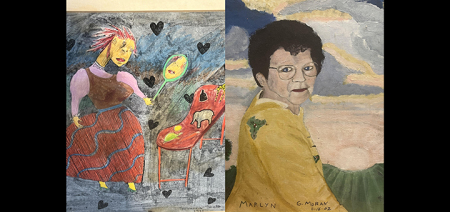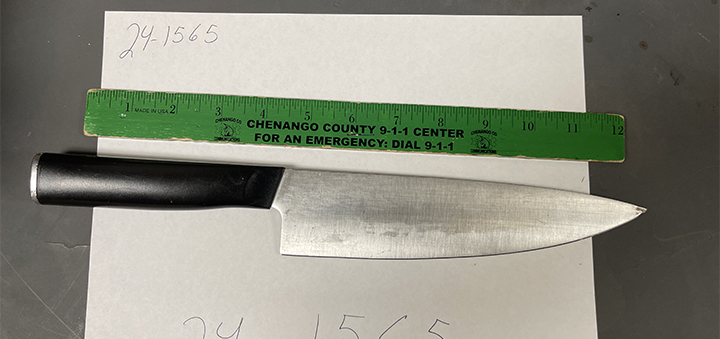Character Sketches # 2
Published:
October 12th, 2010
By:
Shelly Reuben

When I was doing the job and living the life, I did not perceive Graphic Transformations as a bubbling caldron of memorable cubicles inhabited by people I would never forget.
My best friend at the time, Jeannie, is still my friend, and my Big Dream to be a writer turned out to be a good fit.
Jeannie was a full-time permanent employee, and I was a seasonal part-timer. The business of the company was to create department store catalogues. Our clients included Macy’s, Gimbels, Bloomingdale’s, Dayton’s, and probably a dozen more, the names of which are lurking behind a blackout curtain at the end of a long forgotten corridor in my mind.
Speaking of which, the office that Jeannie and I shared was down a long, narrow corridor, off a niche, into a maze that jagged this was and that, turned right, and ended in a small space that our boss called Aida’s Tomb.
Picturesque speech.
Picturesque people.
Some of the owners and executives of the company were exactly what they seemed to be: competent professionals engaged in an aspect of advertising that required them to hire staff members who were trained in – Ta-Da – “The Arts.”
And so, Graphic Transformations employed art directors, creative directors, graphic artists, photographers, copy editors, and copywriters. As support staff, there were typists, art coordinators, merchandise coordinators, stock room clerks, messengers, and bookkeepers.
Jeannie was an art coordinator.
I was either a typist, because I was the fasted typist in the world, or a merchandise coordinator, which meant that in the Darwinian scheme of things, I was lower on the food chain than my best friend.
Department store catalogues, then and now, are composed of many elements, the most important of which are photographs of the merchandise, along with alluring product descriptions.
When I wasn’t typing “A perfect scarf to go with your favorite cardigan or suit,” I was relegated to the stockroom, where I unboxed the lamps, towels, toasters and teapots, which after being photographed, would be assigned to this page or that.
All of which required detailed lists of what was being shipped, which store it was coming from, in what color, quantity, and model number, for which page, and in which catalogue.
Pagination was a big word in our lives, because some of our clients used the same merchandise in more than one catalogue. The upshot was that the same lamp on page 11 of the Robinson’s catalogue might be assigned to page 32 in the Dayton’s catalogue.
After the merchandise was unpacked and logged in, it then had to be repacked and shipped to the photographer who was going to take the pictures.
Which brings us to Marvin.
Marvin was manager of the stockroom.
He came to work at Graphic Transformations long after I had already staked out my claim to a quadrant of shelves. Therefore, I felt entitled to dislike him with a degree of immaturity that only one who thinks “Na na na na na na – I got here first,” can achieve.
Marvin was in his late 50s. He had grizzled gray hair, a gruff pugilistic face, eyebrows like bottle bristles, and hair growing out of his ears and his nose.
He was short, stocky, and troll-like.
He never smiled, and he gave the impression of a man who had worked his whole life at one company, which had gone out of business, and had come to Graphic Transformations too proud to admit that he was hanging onto his new job for dear life.
Marvin didn’t care that I didn’t like him. He didn’t care if anyone liked him, and in looking back on my merchandise coordinator misadventures, it is embarrassingly obvious that it was I, and not Marvin, who caused all of our stockroom feuds.
My problem was simple. I resented that a grumpy man with conspicuous ear and nose hairs had invaded my turf.
Hey.
I was young, stupid, sassy, smart, and a wiz at logging in and sending out the merchandise that we had to shoot.
I don’t know how long I persisted in tormenting the poor man – certainly, no less then a few months – and I don’t know when, how, or why my feelings for Marvin changed. First to neutral, then to respect, and ultimately to affection.
Eventually, Marvin started to like me, too.
He was honest, organized, and good at what he did, so it was probably nothing more than our mutual professionalism that broke through the barrier of age, grumpiness, and indifference on his part, and youth, perkiness and scorn on mine.
There are two other people I wanted to tell you about today.
First, Howard.
I don’t remember what his title was, but for a while there, Howard oversaw Jeannie and me. After the merchandise was photographed and laid out on the page, he was in charge of whatever came next, which included getting the whole shebang to the printer.
Howard had dark skin, like a white guy with a jaundice-yellow tan. He was tall and lean, and wore his pants belted high over his waist like a nerd. He had a gaunt, sad face, and thinning dark hair.
Since, technically, he was our supervisor, when the executives at the company made unreasonable demands, we expected Howard to stand up to them and defend our time, our honor, and, well… us.
This, of course, he did not do.
Which is why Jeannie named him “Howard the Coward.”
Which, also, is where the odd thing comes in, because more than anything else in the world, Howard loved old movies, and the movies he loved best were the ones that had the most heroes.
Gary Cooper, John Wayne, Clark Gable, Spencer Tracy, Jimmy Stewart, Alan Ladd. Howard worshipped them all. Name a film with a theme of valor, and Howard could describe the plot, the co-stars, and the directors. He could even recite immortal likes, like “Smile when you say that” or “This is the beginning of a beautiful friendship,” or “He’s not heavy, he’s my brother.”
He lived a life of inner grandeur.
But in our world, he was Howard the Coward.
And then, there was Catherine the copywriter.
I never got to know her very well. She worked in a writer’s bullpen to which I was assigned for only one day.
She was lush, sexy, self-confident, and drop-dead gorgeous.
Catherine did, however, look her age, which must have been somewhere between 35 and 40. She had an incredible peaches and cream complexion, eyes so dark brown they look black, and beautiful, thick, curly, prematurely white hair.
She looked the way you would expect Snow White to look after she had thrown away her trainer bra.
She did not look athletic.
She looked delicious. Like the line, “I was made for pleasure, not for speed.”
When I met her, Catherine was a happily married woman, proud of her husband, Elliot, who had gone to Hollywood to write the screenplay for a movie that was being made from his very own book.
He flew to Los Angeles ahead of her because he had to meet with producers, find a house they could afford, and settle in before he sent for his wife.
A week went by.
Two weeks.
A month.
Catherine never confided in me, but I didn’t need to talk to her to realize that changes were being made.
First to go was her wonderful, voluptuous figure. Weight that should have been the gold standard for a goddess began to drop like autumn leaves.
Another two weeks.
Next to go was the peaches and cream complexion. She came to the office with a perfect tan wearing subtly applied mascara and blush. Her eyebrows had been plucked into a delicate arch that looked as if it wanted to scream, and her lips were covered in dewy lipstick that shone like raspberries in the sun.
Last to go was her hair.
She went home Thursday night the proud possessor of a tumbling mass of magnificent white curls. She came back on Friday morning with a short, stylish gold-highlighted brunette flip.
Fit, toned, and slim, Catherine was a different woman. She looked ten years younger than the wife that Elliot had left behind. She looked pretty. She looked like a California girl. She looked like everybody else.
A few days after her hair turned brown, she left Graphic Transformations to join Elliot in Hollywood.
My guess is that she saved her marriage and kept her husband, but that somewhere along the line, she lost her soul.
There were other people at Graphic Transformations whom I’ll never forget. Artists, writers, and actresses who are tucked way back in my mind the way that Jeannie and I were tucked away in Aida’s Tomb.
Someday, I’ll tell you about them.
Shelly Reuben has been nominated for Edgar, Prometheus, and Falcon awards. She is an author, private detective, and fire investigator. For more about her books, visit www.shellyreuben.com.
Copyright © 2010, Shelly Reuben
Author: Shelly Reuben - More From This Author
Comments






